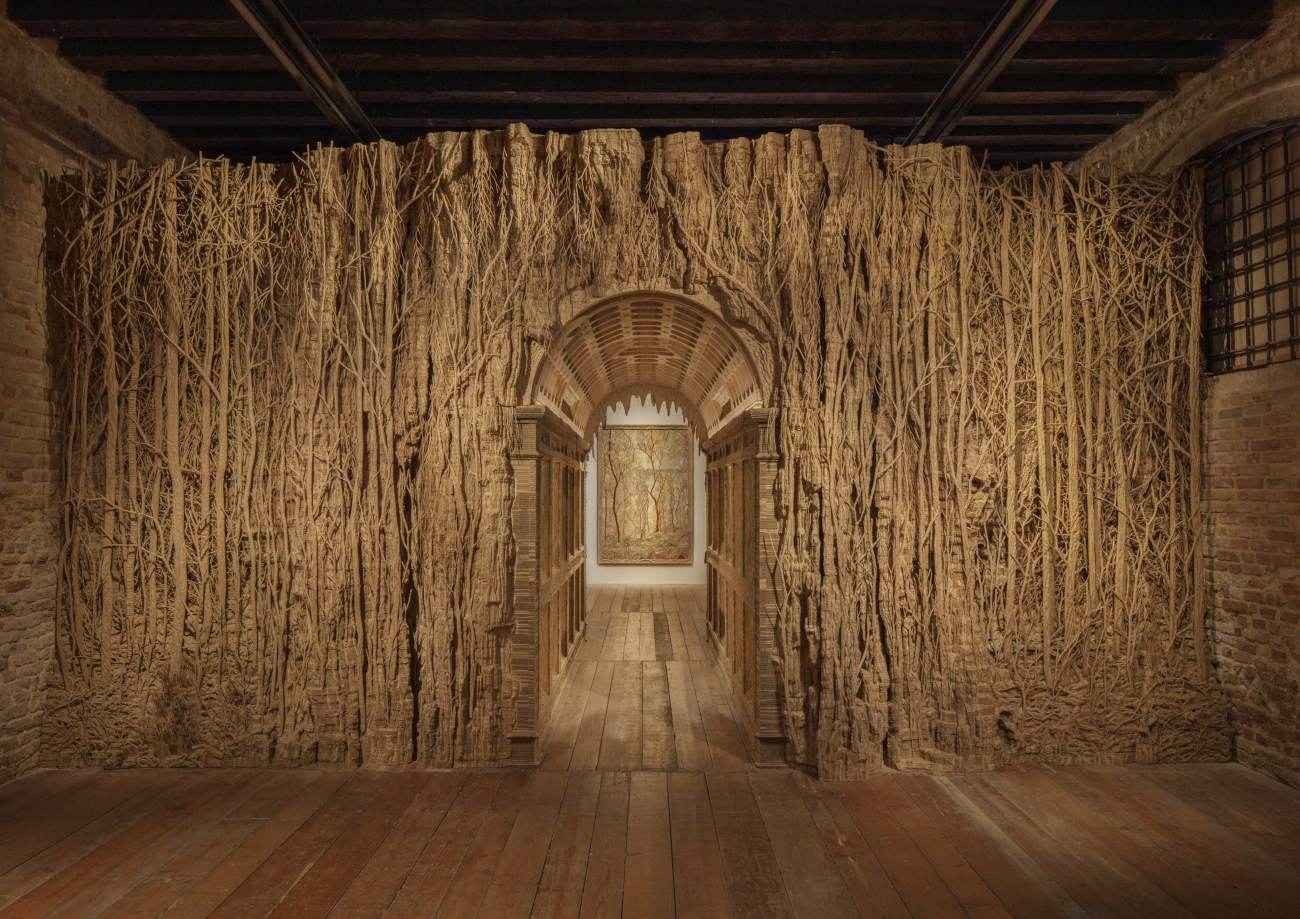From April 10 to November 24, 2024, the Fortuny Museum in Venice hosts the exhibition Selva by Eva Jospin (Paris, 1975), curated by Chiara Squarcina and Pier Paolo Pancotto, in collaboration with Galleria Continua. Eva Jospin’s works, imagined for the occasion, dialogue not only with the historical and environmental context that hosts them, Palazzo Pesaro degli Orfei, but especially with Mariano Fortuny’s artistic production. A continuous comparison and cross-reference between Jospin and Fortuny on nature, creative and experimental processes. The artist always draws inspiration from nature. Through the use of materials such as cardboard, vegetable elements and fibers, metal parts, fabric, he is able to give life to plastic compositions, even of great volume and with a strong scenographic impact. These are works with a fairy-tale tone, at times mysterious, that evoke or recreate a world that is at the center of his interests: landscapes, trees, plants, branches, leaves, geological formations, pieces of vegetation, architectural structures that invite reflection on various themes, such as creativity, operational and intellectual processes.
The large installation in the portego of Museo Fortuny is an artificial “forest” that, once traversed, is intended to give the sensation of losing all cognition of time and space, of being in an undefined and disorienting elsewhere.
The centerpiece of the installation is Gallery (2021-2024): an arched passageway with a coffered ceiling made of cardboard, wood and various materials in which various sources of inspiration from the artist’s work recur. Some of these, derived from his travels in Italy, such as Renaissance and Baroque architecture, classical architecture, capriccios, ruins and fountains, patrician villas and historic mansions, religious buildings, to works in museums. Inside the structure, as in a Renaissance studiolo, is a sequence of wood, cardboard and collage panels alternating with drawings depicting views that, while referring to elements of everyday life, evoke a distant, fairy-tale world.
At the ends of the corridor are two plastic compositions that form its double entrance. The first, also called Gallery (2021-2024), reproduces almost life-size a section of forest made even more credible by the brown colors of the wood and cellulose fiber that give it texture. The second, Nymphées (2022-2024), appears to be the artist’s homage to the Venetian architectural tradition from the 16th century onward: a serliana articulated in a central arched opening and two trabeated side openings from the inside of which hang two framed embroideries, superimposed, in turn, on other embroideries following a display mode that also recurs in the setting of Mariano Fortuny’s atelier on the museum’s upper floor. Enclosed on either side by two panels, the trompe-l’oeil paintings of rustic subjects echo those executed by Fortuny in the “winter garden” on the second floor of the house.
At the back of the portego is access to a room where, flanked by some graphic ink proofs referable to the two larger embroideries, sits Carmontelle (2023), an “animated” panorama inspired by the transparent landscapes devised by Louis Carrogis de Carmontelle (Paris 1717-1806): views engraved on canvas and rotated on a roll of paper stretched between two cylindrical structures used as backdrops for stage and theater actions. Similarly, Jospin elaborates a pierced view moved by a mechanical device that ideally evokes those conceived by the 18th-century French painter and architect as much in structure as in scenic function and, at the same time, recalls Fortuny’s work in the field of stage design.
For info: https://fortuny.visitmuve.it/
Photo by Benoît Fougeirol.
 |
| Venice, the Fortuny Museum welcomes the fairy-tale compositions of Eva Jospin |
Warning: the translation into English of the original Italian article was created using automatic tools. We undertake to review all articles, but we do not guarantee the total absence of inaccuracies in the translation due to the program. You can find the original by clicking on the ITA button. If you find any mistake,please contact us.